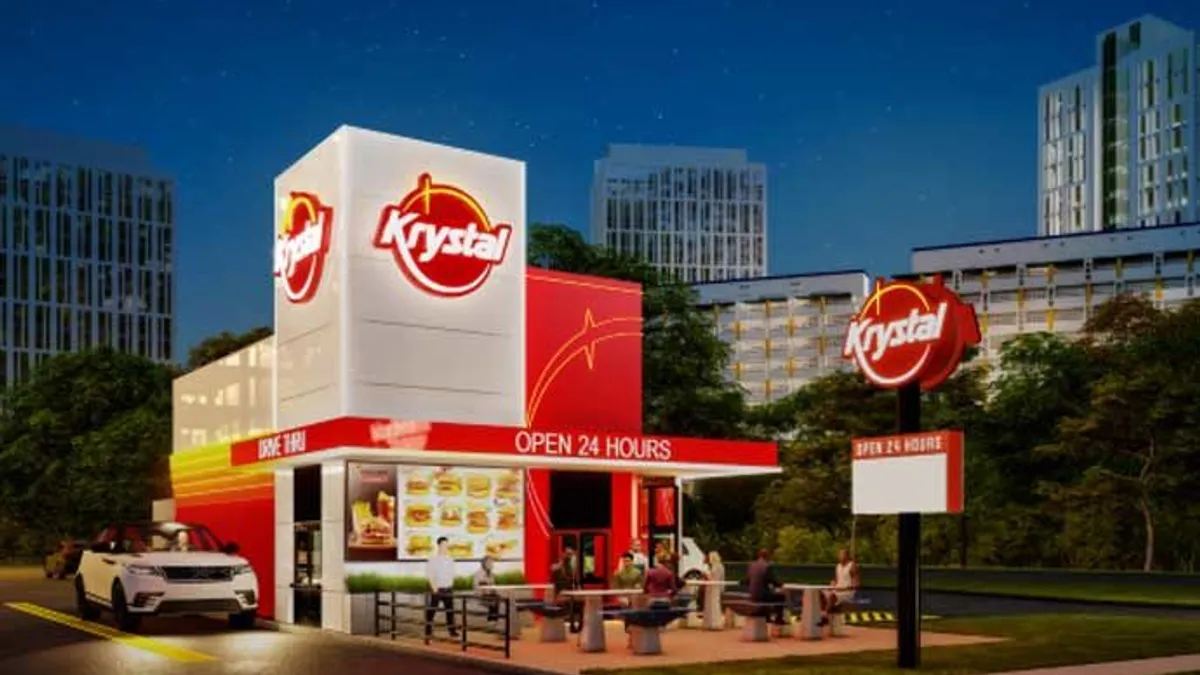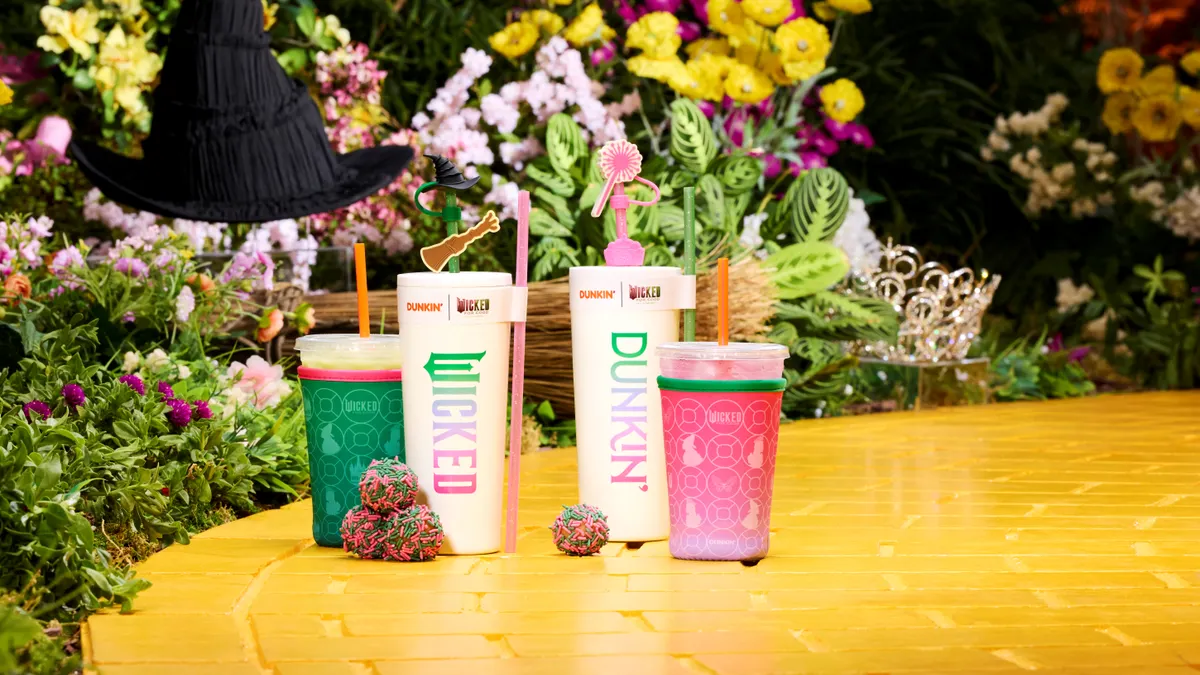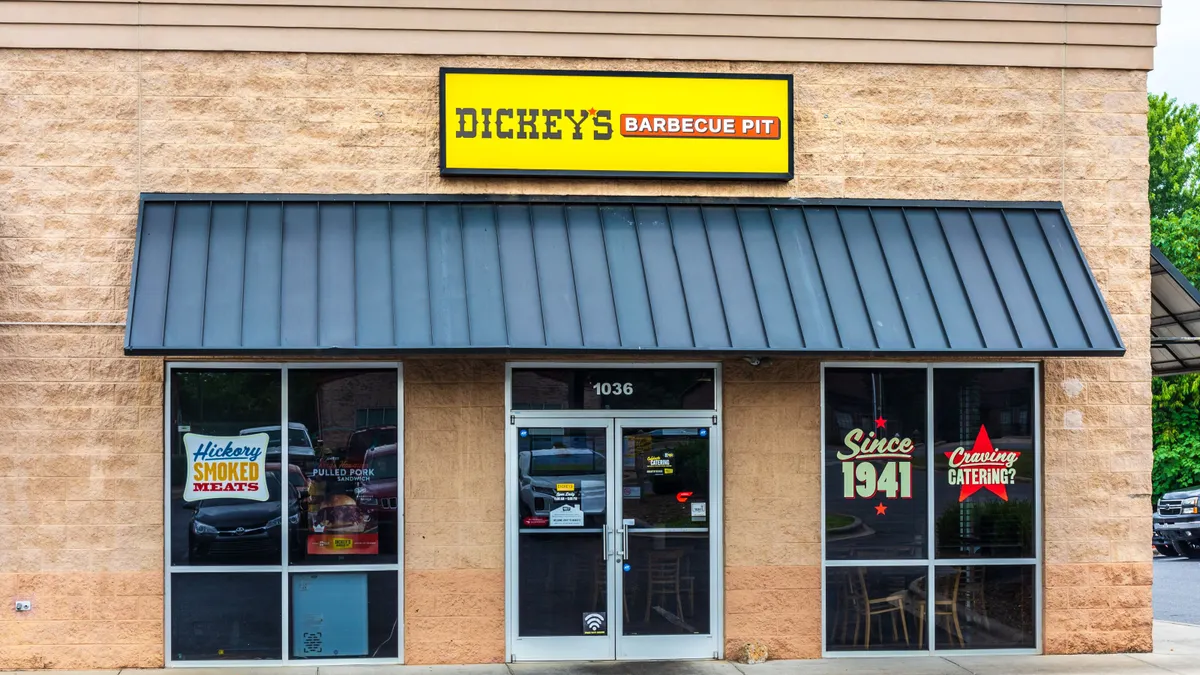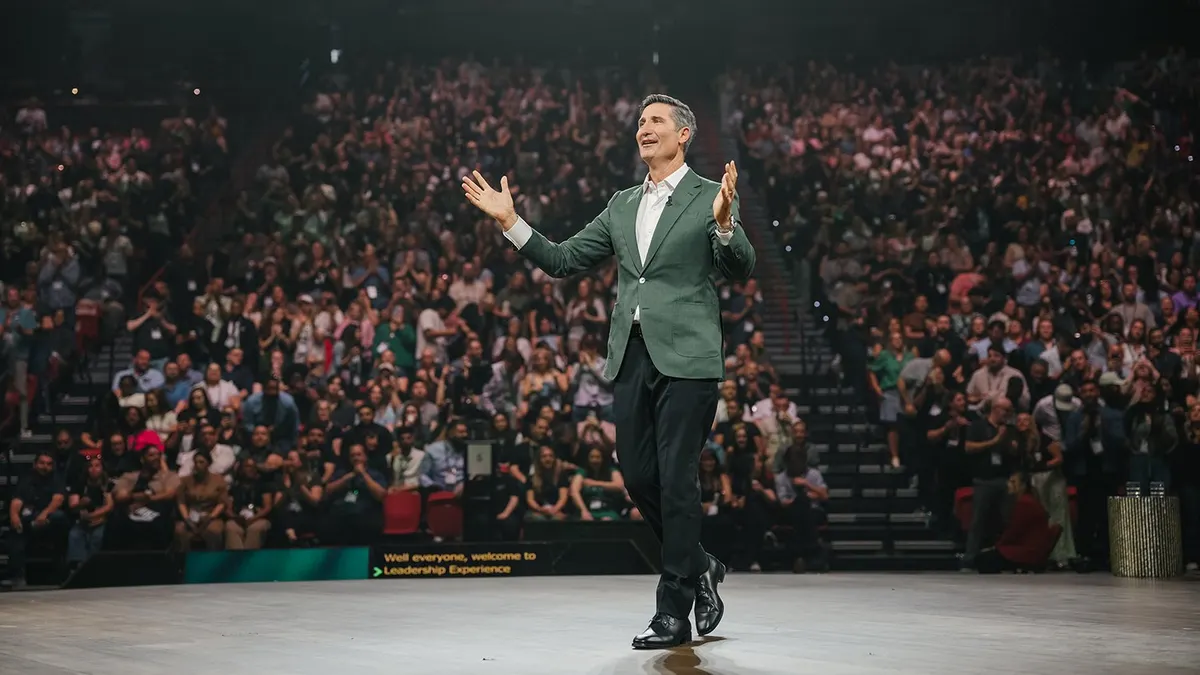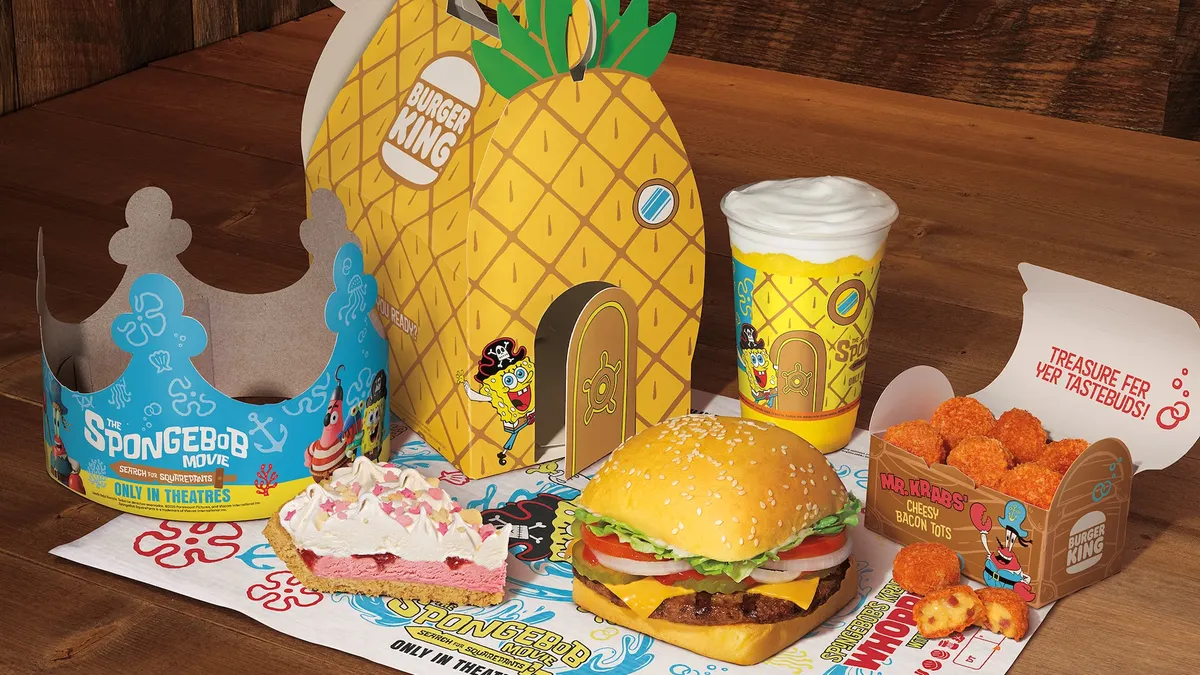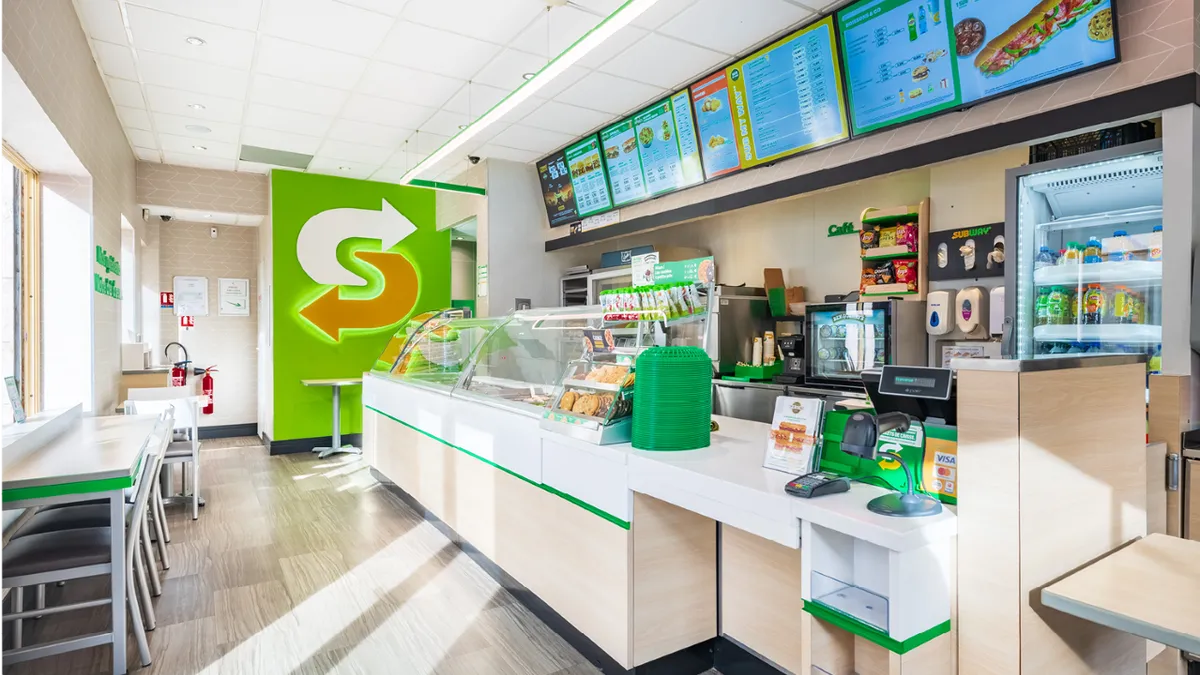When Krystal declared bankruptcy in January 2020, franchisees faced sales declines of over 10%, according to Franchisee Times. But after Fortress Investment Group acquired the struggling brand in May 2020, Krystal’s finances started to turn around. A year later, operators recorded double-digit sales growth, and Krystal added a new franchisee for the first time in 15 years.
“[Franchisees] are extremely excited about the potential of growing the brand,” Krystal President Thomas Stager said. “2021 for most of the Krystal folks was one of the best years they’ve ever had.”
The company, which developed new off-premise prototypes this year, plans to reach 500 restaurants within the next three to five years, Stager said. That goal would practically double its current footprint of 282 restaurants, consisting of 182 company restaurants and 100 franchised stores, he said.
The fast food chain expects to stay within its current Southeast region as it grows, and is looking to enter Louisiana and North Carolina and grow its presence in South Carolina, Stager said. The company also opened its first store in Puerto Rico this year.
New prototypes emphasize off-premise
To help get the brand on track, Fortress created the Krystal Council, which includes about 85% of Krystal’s franchisees. This group, which also includes corporate representatives, brainstormed the new prototypes and operational strategies.
Krystal’s latest store designs are adapted to changing consumer preferences. Pre-pandemic, the chain had a sales mix of 75% drive-thru and 25% dine-in transactions, but during the pandemic, drive-thru mix grew to 96% and now hovers around the upper 80th percentile, Stager said.
One 1,200-square-foot prototype is drive-thru- and carryout-only, and the other is 1,700 square feet and offers drive-thru, carryout and a small lobby for dine-in service. A traditional Krystal restaurant is about 2,700 square feet.
“[Franchisees] are really excited about the new prototype where they can grow and financially, it’s a little bit easier on their pockets as well,” Stager said.
The smaller stores use about 20% less kitchen space and require 10% less labor than a standard Krystal location, Stager said.
The company expects the first prototypes to open 75 to 90 days after breaking ground. Krystal prepared ahead of time for supply chain issues and ordered enough equipment for about eight restaurants to anticipate growth, in case any of its franchisees hadn’t placed orders yet.
The company plans to open roughly six restaurants this year. Three of those restaurants will be new restaurants, one restaurant will be a scrape-and-rebuild, and two will be remodels, Stager said. Four restaurants will use a new prototype, one of which will be drive-thru-only, and the rest will have a small dining room, he said.
Fighting for relevance in a crowded segment
As Krystal grows in new and existing markets, it will continue to battle for consumer awareness and frequency.
“We’re the second oldest QSR in the country and have been fighting for relevance for 90-plus years,” Casey Terrell, Krystal’s CMO, said. Terrell joined the brand in August and plans to bring his digital, technology and marketing skills into this role.
Terrell grew up with the brand and used to go to it all the time during high school in Jacksonville, Florida, but stopped visiting after he went to college in the Northeast, which was outside of Krystal’s footprint.
“That’s one of those things that I really want to dive into with our customer behavior and why we lost relevance,” Terrell said. “There’s a lot we can do on the cultural side.”
In the past, Terrell didn’t really see media or advertising that spoke to him as a customer, he said.
Recapturing customers will come from using tech and digital tools, such as a new app, website or loyalty program, which Terrell called “low hanging fruit.” The company wants to establish a solid consumer dataset that can inform the chain about diner behavior and help shape future programs, Terrell said.
It also is important for corporate to visit its restaurants and their surrounding communities to better understand the customer experience, he said.
“We don’t even know what [innovations] will come yet because a lot of it is just talking to guests, talking to our operations team and … having more of a product mentality around marketing and what’s better for the experience,” Terrell said.
Celebrities help bring excitement to the brand
As part of its push to stay relevant, Krystal also has partnered with several celebrities to open restaurants.
“We’re excited about partnership[s] with celebrities that are helping us look at our brand in a different way,” Stager said.
Through partnership with 2Chainz, the hip hop artist has helped with marketing and menu development as well as building design, including building exteriors, color schematics and upcoming menu board layout. 2Chainz has a huge social media following and can reach customers that Krystal wouldn’t have been able to with just TV and billboards, Stager said. The hip hop artist is expected to open his first restaurant in the Southeast later this year.
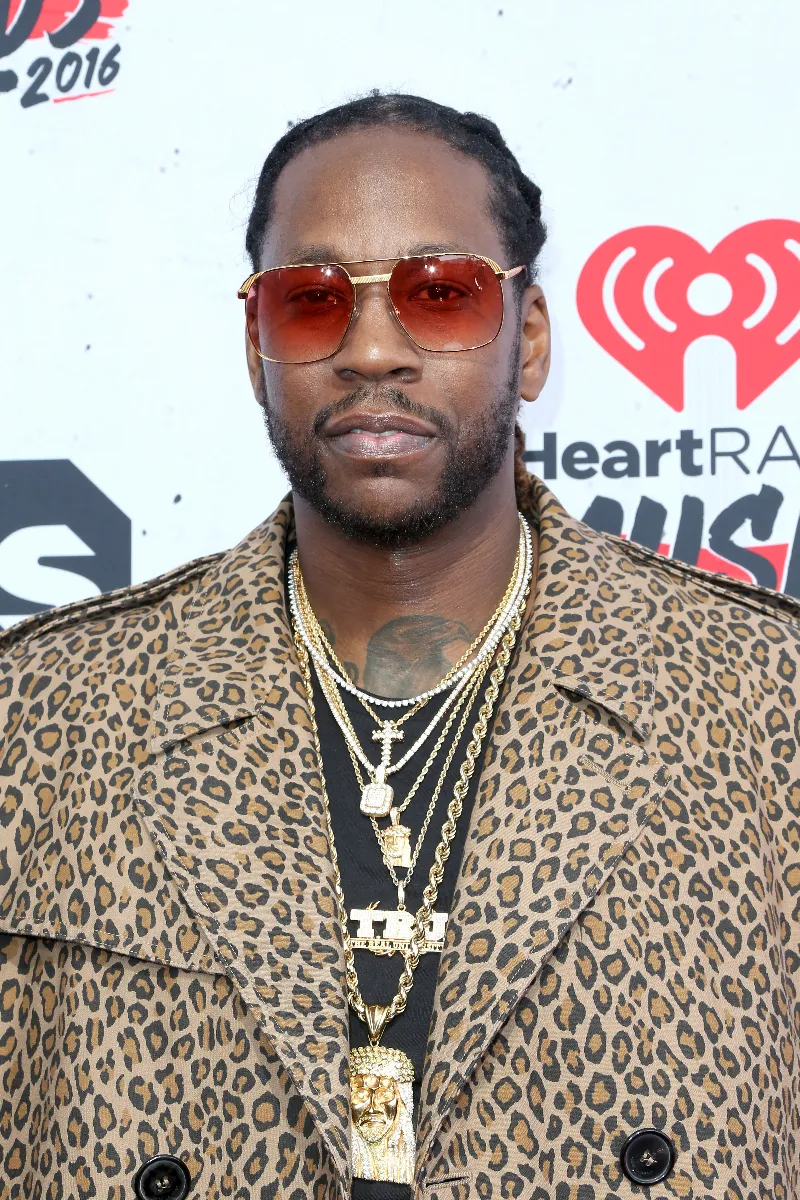
The company will continue to tap into 2 Chainz as head of creative.
“[2 Chainz] is really part of the brand,” Terrell said, adding that the hip hop artist grew up with the fast food chain and wants to help the concept grow.
Former NFL New York Giants player Victor Cruz has plans to open several restaurants in New York and New Jersey. Krystal also partnered with Ray J as part of its ad campaign to help launch a $1.99 Krystal snack.
The company sees its relationships with celebrities as long-term partnerships rather than one-offs. As it moves forward, Krystal will consider working with celebrities who make sense for the brand, Terrell said. There could be more deals with the college athletes and influencers, but it will look for longer-term commercial collaborations as well.
“These are business people who want to grow their brands. They love Krystal and want to grow with us,” Terrell said



